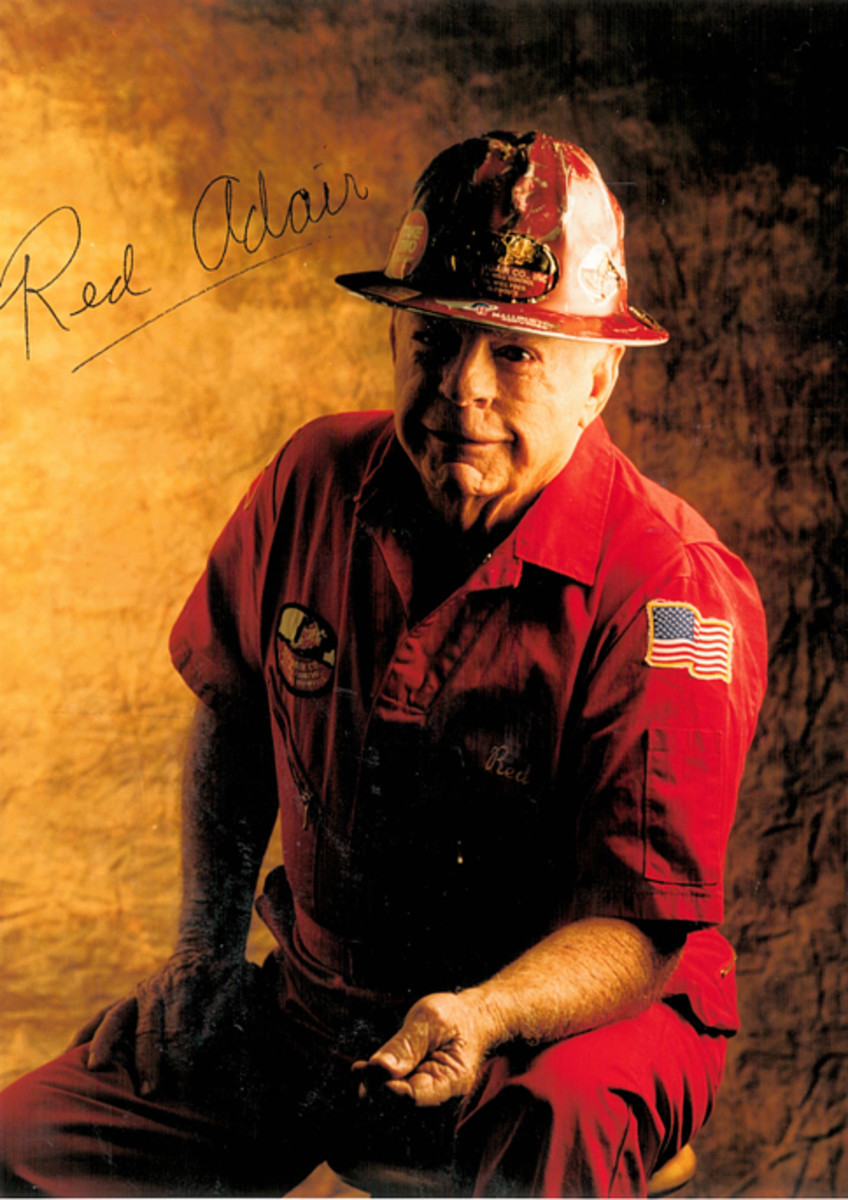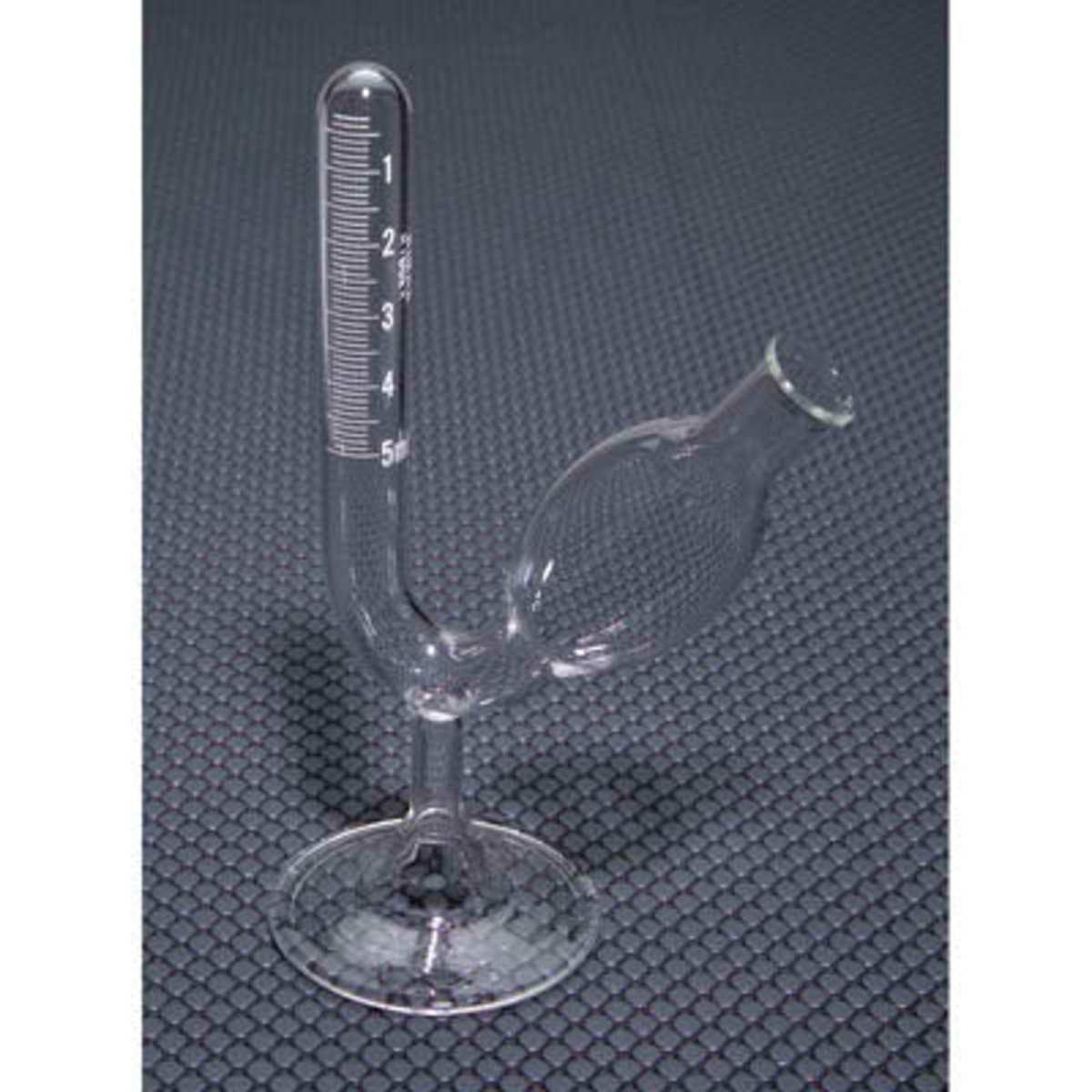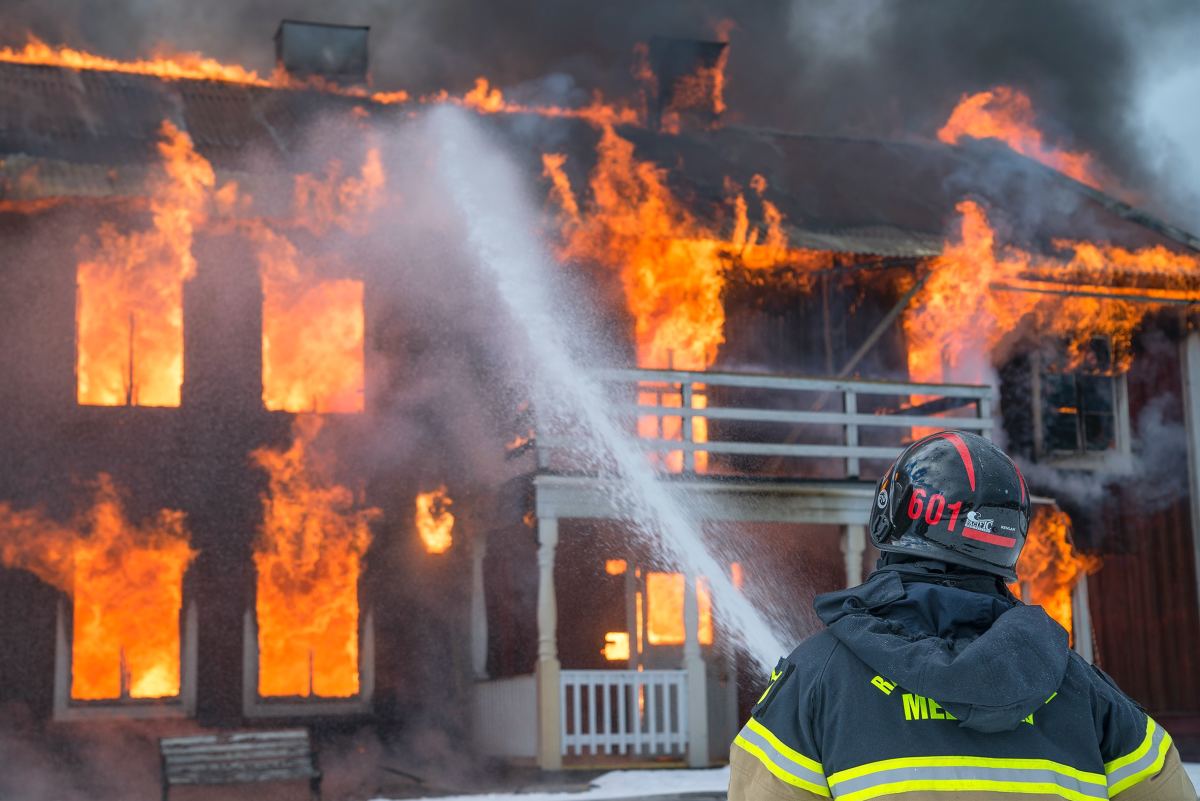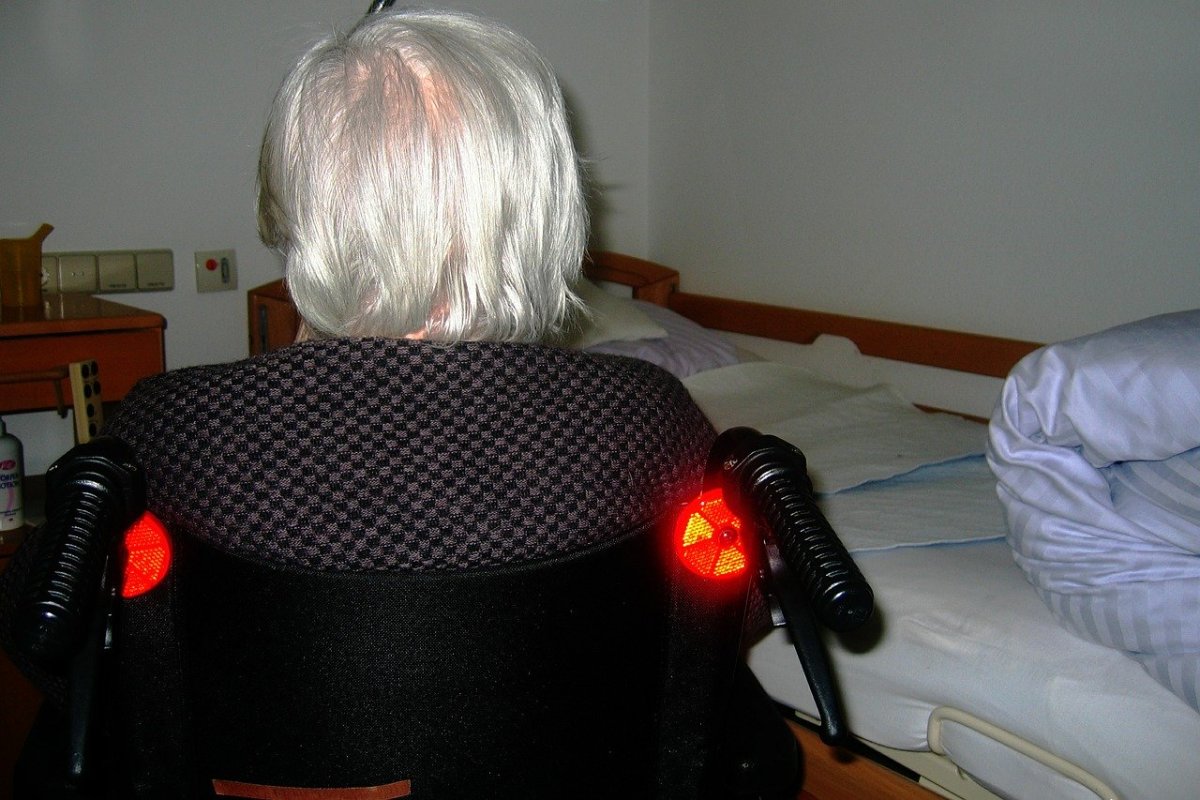Putting Out Fires:
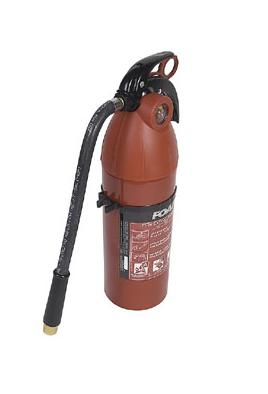
All About Fire Extinguishers
By Joan Whetzel
Fire extinguishers are a must for any home, office, or work shop. Yes, it's entirely likely that this gadget will become nothing more than a dust collector, but having it there when you need it could just save your property - and your life. The problem, though, comes in choosing the right fire extinguisher. There are a number of different types that can be used, depending on the type(s) of fires that may be encountered. So how does a person go about figuring out what he or she needs? Start off by figuring out what types of fires you are likely to encounter in the place where the fire extinguisher will be used.
The Fire
Fires occur from chemical / combustion reactions between oxygen in the air and a fuel source (i.e. wood, gasoline, aerosol propellant). None of these fuel sources spontaneously combust. A third component must be present in the form of heat; an ignition temperature must be reached for it to catch on fire. This could be something along the lines of adding an electrical spark, placing burning kindling in or near the fuel source, or lighting a match in order to make the fuel ignite.
The type of fire you may encounter depends on the combustible materials available. The combustible materials come in four categories:
a) Commonplace flammable items like paper, wood, cardboard, and most plastics.
b) Flammable liquids used for fuelling engines, lamp, stoves and the like - gasoline, kerosene, grease and (heating) oil.
c) Electrical equipment like appliances, wiring, circuit breakers and electrical outlets.
d) Items found in a chemical laboratories, anything involving combustible metals like magnesium, titanium, potassium and sodium.
e) Burnable items usually found in home and restaurant kitchens like cooking oils, trans-fats, or that fats used in cooking appliances.
Fire extinguishers are divided into types that match these fires, which makes the selection process much easier.
The Science Behind Fire Extinguishers
Without all three of the necessary components - oxygen, fuel, and heat - a fire will not light. Remove one of the three components and the fire will go out. Fire extinguishers work on the principle of removing one of the key components for a fire to exist. One type of extinguisher, for example, contains carbon dioxide (CO2), which is heavier than air so it sinks. By spraying the carbon dioxide fire extinguisher on the source of the fire (which is usually on the floor, on a table, or on the stove), the CO2 sinks to the level of the flames and the fire's source (i.e. the wood, the stove fire), thereby forcing the air up and away from the fire. By removing the oxygen from the fire, it cannot burn and goes out. Another type of extinguisher, the chemical extinguisher, leaves a non-flammable residue on the extinguished materials, seriously decreasing the chances that the fire will re-ignite. Since CO2 extinguishers don't leave behind this residue, they are the ideal extinguisher for electrical fires in items like computers, stereos, and TVs. It makes clean up and repairs easier.
Types of Fire Extinguishers
Probably the easiest fire extinguisher to come by is a plain old water extinguisher. Water works by cooling the source of the fire and soaking the source of the fire in such a way that there is no oxygen to help the fire burn. Water extinguishers work best on wood, paper, and cardboard fires but doesn't work so well on grease fires or electrical fires. Water extinguishers should never be used on electrical fires due to the extreme risk of electrocution.
Carbon dioxide extinguishers keep the frozen, liquid CO2 compressed inside a cylinder, releasing the pressure, allows the liquid CO2 to warm and expand back into a gas, which blankets the fire and its source. CO2 extinguishers work best on kitchen and restaurant fires because they won't cause the cooking oils and grease to spread and because they don't leave a residue on the cooking surfaces, the equipment, or the food that could be harmful to humans.
Dry chemical extinguishers usually contain sodium bicarbonate, potassium bicarbonate, or monoammonium phosphate, which are all basically a form of baking soda. In fact they work much the same as blanketing a fire with baking soda. Spraying one of these extinguishers on the fire causes the "baking soda" like substance to start breaking down from the intense heat of the fire. As the substance breaks down, it releases carbon dioxide along with an insulation foam, which smothers the fire. Dry chemical extinguishers work best on flammable liquid fires (gasoline, kerosene, etc.).
Fire extinguishers come in one of 5 basic classes, depending on the type of fire they put out:
· Class A used for paper, wood, cardboard, and most plastics. Their label provides a numerical rating indicating the amount of water they hold and the amount of fire that can be extinguished. Labels also contain a green triangle symbol as a visual indicator of that this is a Class A extinguisher.
· Class B used for combustible liquids like gasoline, kerosene, grease and oil. The numerical rating on the label indicates the approximate square footage that the extinguisher will cover. The label contains red square symbol as an visual indicator that this is a Class B extinguisher.
· Class C used on electrical equipment, appliances, wiring, circuit breakers, outlets, or any other electrical fire. These extinguishers have no numerical rating. The "C" classification indicates that the quenching agent is non-conductive, it doesn't conduct electricity, so the risk of electrocution is virtually non-existent. The label contains a blue circle as a visual reminder that this is a Class C extinguisher.
· Class D are used in chemical labs and for situations involving combustible metals like magnesium, titanium, potassium and sodium. They don't have a numerical rating or a multi-purpose rating. These extinguishers cannot be combined with other Classes of extinguisher. They are intended for use with Class D fires only. The label contains a yellow decagon as a visual indicator that this is a Class D extinguisher
· Class K are used in kitchens and restaurants for cooking oil, trans-fat, or fats in cooking appliance fires. Their label contains a black hexagon to visually indicate that this is a Class K extinguisher.
Some fires may be caused by a combination of these classifications. An office fire, for instance, may be a combination of a paper fire (trash) and electrical (computers, copiers and other electronic equipment). In such cases, a combination extinguisher is the best kind to have around. The ideal combination extinguisher for most settings is the ABC Class since it puts out all of the most common types of fires that most people will encounter.
How to Use an Extinguisher
It never hurts to be properly trained in the use of extinguishers. Training can be obtained through the Fire Department and, in some cases, through the company that sells you the extinguisher. In an emergency it's best to remember the following tips and steps:
· Remember: the contents are under pressure and will be expelled with some force.
· Remember: the contents of carbon dioxide extinguishers are quite cold, so aim the nozzle by holding the nozzle cone (which doesn't conduct the cold) and not by the metal tube that connects the nozzle to the extinguisher (conducts the extreme cold and could freeze your hand to the metal.
· Remember: to aim the nozzle so it sprays the fuel rather than the flames, and move it in a sweeping motion.
· First, remove the safety pin.
· Second, aim the nozzle.
· Third, depress the lever.
Other Considerations
The time to use a fire extinguisher is when the fire is still small enough to be controlled by an extinguisher - usually as soon as the fire breaks out - and once you have alerted other people in the vicinity of the fire, the fire department has been called, you are clear of any toxic spoke that the fire may produce, and you have a means of escape if the extinguisher doesn't help. Trust your instincts on this one. If the fire moves rapidly or has become quite large before it is discovered, the move quickly and safely out of the building and out of harm's way, and then call the fire department.
Perform regular maintenance checks on all extinguishers to ensure that:
1) They are easily accessible and not blocked by anything like furniture or equipment.
2) The gas pressure is at the recommended level. Some have pressure gauges to show the pressure level. If you are not sure, ask the fire department for help.
3) All the parts are free of damage and are free of insects and debris.
4) The extinguisher is clean and free of any accumulations of oil and grease.
5) That dry chemical extinguishers are shaken up once a month to prevent settling or packing of the chemicals.
If the extinguisher needs recharging or is damaged in any way, replace it immediately with a new fire extinguisher.
Resources
Fire Extinguisher 101. Fire Extinguisher Types (What Kind Do I Use?)
http://www.fire-extinguisher101.com/
How Stuff Works. How Fire Extinguishers Work.
http://home.howstuffworks.com/home-improvement/household-safety/fire/fire-extinguisher1.htm
FEMA. Fire Extinguishers.
http://www.usfa.fema.gov/citizens/home_fire_prev/extinguishers.shtm

